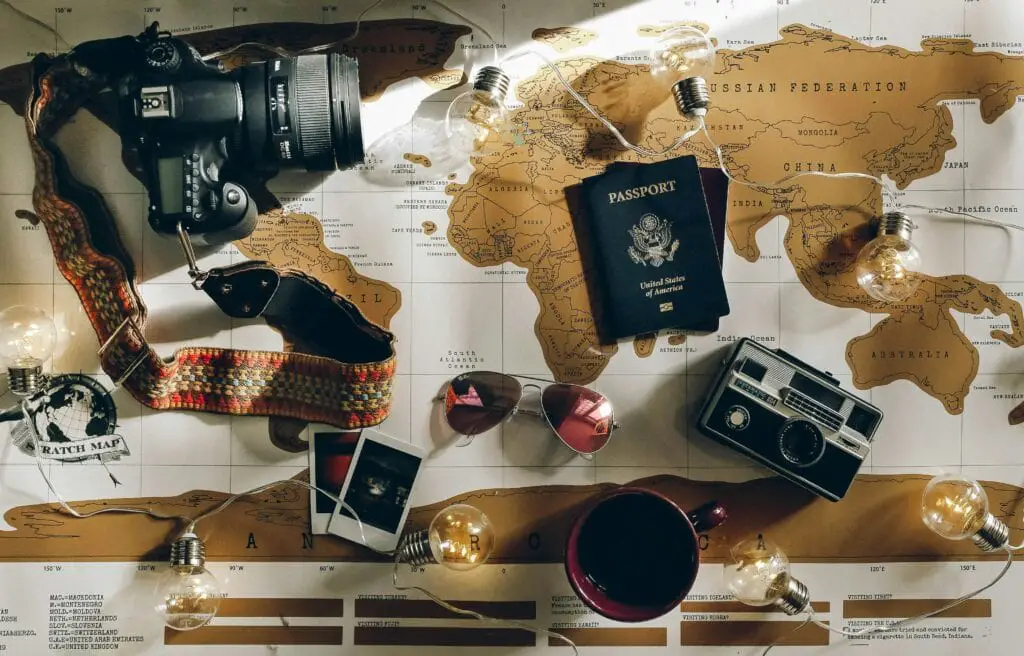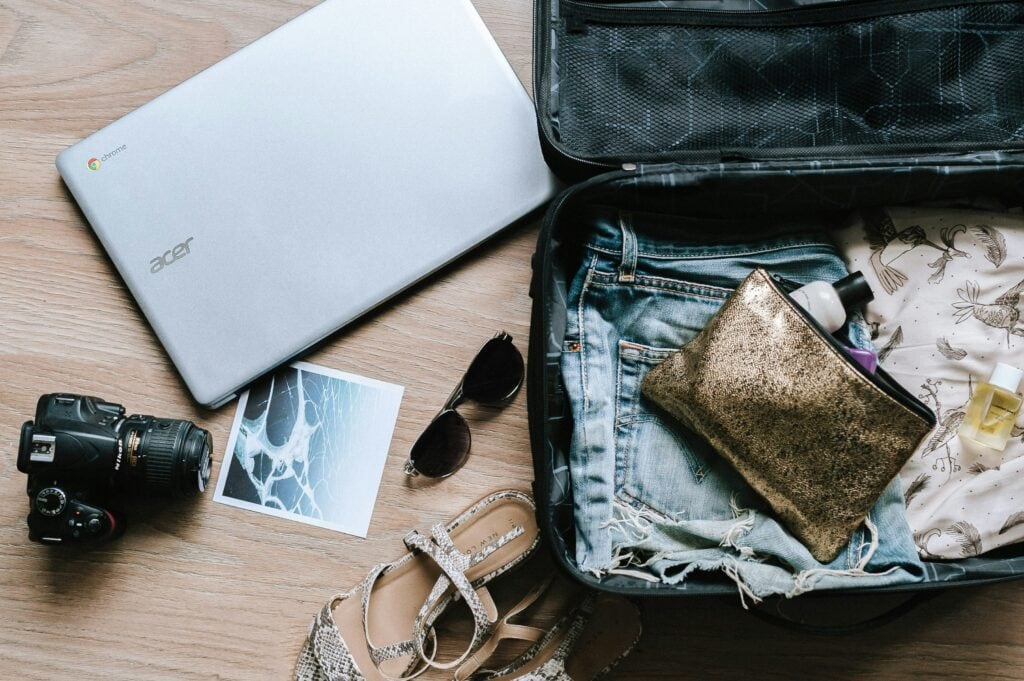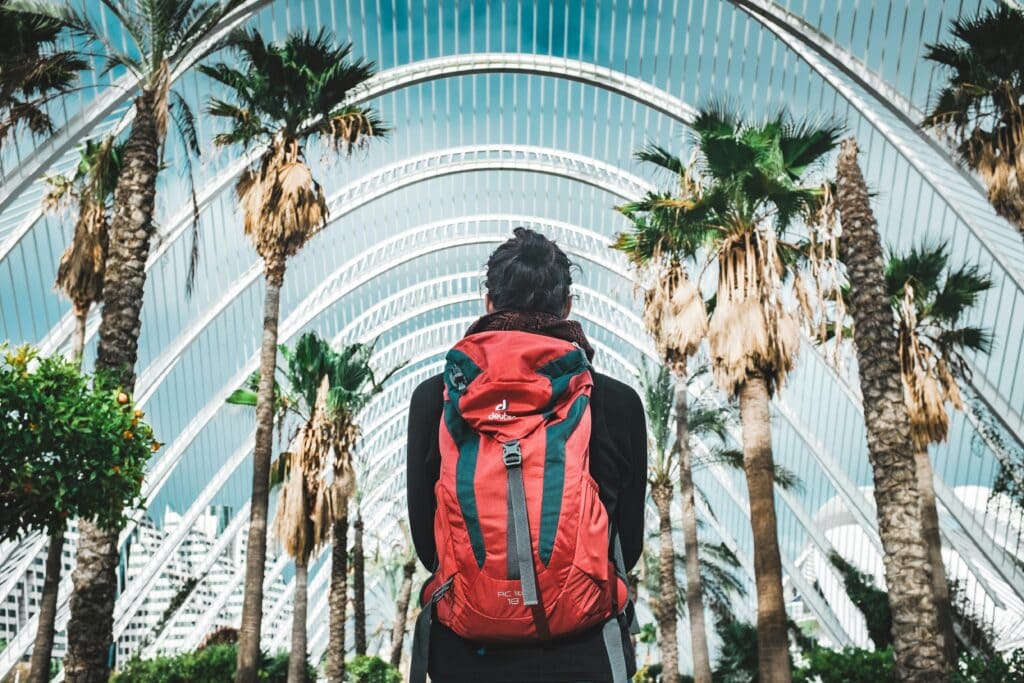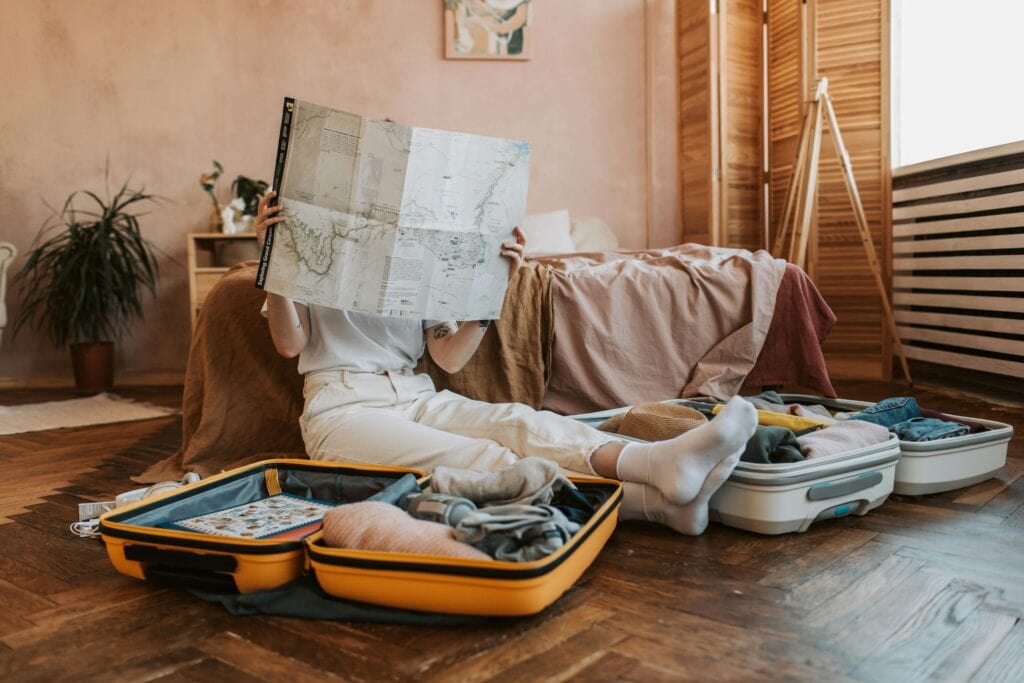Packing the right items for international travel makes all the difference between a stressful journey and a relaxing adventure. Many travelers worry about forgetting something important before a long trip, but with a clear packing list, it is easy to cover the essentials and avoid last-minute stress. Bringing the necessary travel documents, a small first aid kit, and practical travel accessories helps make any trip abroad smoother and safer.
When planning for an extended stay, it is important to choose versatile clothing, lightweight luggage, and gadgets such as a universal adapter and portable charger. Staying organized with packing cubes, and packing personal care items in travel sizes, leaves more room for souvenirs and keeps everything easy to find. A simple checklist with basics like passport, tickets, and comfort items can give peace of mind and ensure nothing gets left behind, as seen in guides like this international travel checklist.
Key Takeaways
- Essential documents and smart planning make travel smoother
- Versatile clothing and organized packing save space
- Travel health and comfort items are important for long trips

Core International Travel Essentials
Every international trip begins with careful preparation. Organizing important documents, securing the right forms of payment, and arranging health protection are vital for a smooth journey.
Travel Documents Checklist
Having all required documents ready can prevent serious travel issues. A valid passport is required for almost every country, and it generally needs to be valid for at least six months past your travel dates. Many destinations also require a visa; check entry rules well in advance.
Bring printed and digital copies of your boarding pass, hotel reservations, and transportation tickets. This helps when your phone dies or Wi-Fi is scarce. Having a list of important emergency contacts is smart, too.
Table: Key Travel Documents
| Document | Why You Need It |
|---|---|
| Passport | International entry |
| Visa | Entry permit (if required) |
| Boarding pass | Airport check-in & flights |
| Hotel reservations | Accommodation proof |
| Transportation tickets | Buses, trains, local travel |
| Emergency contacts | In case of emergency |
For more on what documents to pack, visit this international packing checklist.
Money Matters and Payment Methods
Carrying both credit cards and local currency is best practice. Some places accept cards everywhere, but small shops or taxis may only take cash. Ask your bank if your cards work abroad and notify your bank about your travel dates to prevent fraud alerts.
Be aware of foreign transaction fees on your cards. Consider using cards with no fees or withdrawing larger amounts at once to reduce ATM charges. Lock away extra cash in a money belt or hidden pouch for safety.
Bring a small amount of local currency with you upon arrival. This covers expenses like transportation or snacks when you first land. For more advice, see this international travel checklist.
Travel Insurance and Health Precautions
Travel insurance protects against trip disruptions, accidents, or theft. Choose a plan that covers both health emergencies and lost belongings. Some insurance plans also cover trip cancellations or delays.
Bring any prescription medications in their original containers, along with a copy of your prescription. Carry enough medication for the entire trip, plus a bit extra in case of travel delays. Prepare a list of your medications and dosages—this can help doctors abroad provide proper care if needed.
Consider packing a small first aid kit with basic items like band-aids, pain relief pills, and motion sickness remedies. Health is a top priority when traveling far from home. Find more packing tips at this core international travel essentials page.

Luggage, Bags, and Packing Tools
Selecting the right luggage and organizing accessories plays a big role in a smooth trip. Choosing what to pack and how to pack it can save time, space, and even money.
Choosing the Right Luggage
The first decision is whether to bring checked luggage, a carry-on bag, or both. For long trips, people often pick a mix—a durable checked suitcase for large items and a carry-on for essentials. Hard-shell suitcases are best if protection is a priority. Soft-sided luggage usually offers more flexibility with space.
A quality backpack or duffel bag works well for travelers needing flexibility and easy movement. These are popular among backpackers and those moving often between locations. Backpacks with padded straps, compartments, and a laptop sleeve provide extra comfort and organization. When picking luggage, look for strong zippers, wheels, sturdy handles, and TSA-approved locks.
Organizational Accessories for Efficient Packing
Using the right accessories keeps everything organized and easy to find. Packing cubes are a favorite tool—they separate clothes by type or outfit. This also helps keep dirty clothes away from clean ones during the trip. Consider a toiletry bag with clear, leak-proof pockets. For more convenience, a hanging toiletries bag saves sink space in bathrooms.
Other helpful tools include laundry bags for used clothes and small pouches for electronics, chargers, and documents. Compression bags can be used to save space with bulky items like jackets. Labeling each cube or bag makes quick access much easier.
Pack Light Strategies and Packing Tips
To pack light, travelers should choose clothing and shoes that match in color and can be worn in different combinations. Rolling clothes instead of folding saves space and keeps items less wrinkled. Limiting shoes to two pairs—one for walking and another for dress or sport—also saves room.
Travelers use packing cubes, as they compress clothes and make repacking easy if moving between locations. Making a checklist ensures nothing important is forgotten. For more tips on how to pack efficiently, visit this detailed packing guide. Remember to check airline weight and size limits to avoid extra fees.

Personal Care and Health Items
Staying clean, healthy, and protected keeps travel more enjoyable and less stressful. Packing the right items helps travelers stay comfortable, practice good hygiene, and better handle unexpected issues along the way.
Toiletries and Hygiene Essentials
Toiletries are basic, but forgetting even one can mean an uncomfortable start to the trip. A simple travel kit should include a toothbrush, toothpaste, and floss. Many add deodorant, a travel-size body wash, shampoo, and conditioner.
Other must-pack items are a razor, shaving cream, and a small hairbrush or comb. Lip balm, sunscreen, and moisturizer are useful for different climates. Most travelers also bring their own personal hygiene items (such as feminine products or a travel towel) to avoid any surprises at their destination. It’s smart to use refillable travel bottles and keep liquids in a clear bag to speed up security checks. A full list can be found in resources like this international travel packing checklist.
Medications, First-Aid, and Health Kits
Bringing needed medication is critical. Prescriptions should be in original containers, and using a labeled pill organizer keeps doses on track. Key over-the-counter items include pain relievers, allergy medicine, and digestive aids. A small first-aid kit with bandages, antiseptic wipes, and antibiotic ointment can handle minor cuts or scrapes.
Those with health conditions should pack extra medication in case delays happen. They should also bring medical devices, such as inhalers or EpiPens, if needed. Including a small thermometer and a list of emergency contacts is wise. For more tips, check out “Pack Smart” from the CDC.
Sun and Insect Protection
Sun and insect protection is needed for many destinations. Sunscreen should have SPF 30 or higher and be applied every two hours when outdoors. Lightweight hats, sunglasses, and light clothing add another layer of sun protection.
Insect repellent is important in areas with mosquitoes or ticks. Choose one with 20–30% DEET or a natural option with oil of lemon eucalyptus. If traveling to destinations with high risk, consider pre-treating clothing with permethrin or packing insect-repellent wipes. Other helpful items include after-bite cream and anti-itch gel, which can be found in many international travel packing lists like this one from Travel & Leisure.

Comfort, Convenience, and Safety on the Road
Travelers often face unpredictable weather, power issues, and long days on their journeys. Preparing with the right gear makes an international trip more comfortable, secure, and smooth.
Clothing and Accessories for All Climates
Choosing the right clothing and accessories is key for staying comfortable. Layers work well for changing weather. Breathable shirts, a lightweight jacket, and moisture-wicking underwear can help in both warm and cool climates.
Comfortable walking shoes are a must since sightseeing often demands hours on foot. Compression socks are helpful for long flights or bus rides because they reduce swelling.
A sun hat and sunglasses offer protection from harsh sun. If needed, travelers should bring prescription glasses or contact lenses, along with backups. It is also smart to pack a compact travel umbrella for unexpected rain. A money belt adds extra security for valuables in crowded places.
Technology and Power Solutions
Staying connected and powered up is easier with the right tools. An international adapter is needed since power outlets and voltages differ worldwide. Reliable adapters often include USB ports for multiple devices.
A portable charger means phones and cameras will not run out of power during long excursions or layovers. Keeping a digital camera or smartphone with enough storage ensures memories are captured without worry.
Carrying all cords in a small pouch keeps things organized. Using RFID-blocking wallets or backpacks adds protection against electronic pickpockets.
On-the-Go Essentials
Simple items can make long travel days better. A reusable water bottle helps save money and stay hydrated—some styles even have built-in filters. Packing a neck pillow and eye mask improves comfort on planes or buses.
Having airplane snacks like nuts or energy bars avoids hunger if food options are limited. Bringing any necessary prescription medications, along with copies of the scripts, is important.
A small first-aid kit, hand sanitizer, and wet wipes increase cleanliness and safety. Keeping a list of emergency contacts handy helps in case of lost documents or unexpected events. For more tips, check this comprehensive international travel packing list.

Frequently Asked Questions
Travelers face unique challenges when packing for long international trips. Packing the right clothes, picking key items for a carry-on, and organizing important documents can make any journey smoother. Smart packing also means using space well and staying ready for changes in weather or destination.
What are the essential items to pack for a long international journey?
Essentials for long trips include several pairs of comfortable underwear and socks, lightweight shirts, weather-appropriate pants, a versatile jacket, and two pairs of shoes—one casual, one for walking. Toiletries, a small first aid kit, and a universal travel adapter are also needed. Personal electronics, like a phone and charger, are must-haves.
Don’t forget sunscreen, a reusable water bottle, prescription medicine, and travel-size laundry detergent. These basics cover health, comfort, and daily routines. For a structured checklist, see this essential long-term travel packing list.
How should I prioritize packing for different climates when traveling abroad?
He or she should research the weather for each destination on the trip. In warm climates, focus on light clothes, sun protection, and sandals. In cold places, layers are important—a base layer, sweater, and a waterproof jacket will help adjust to temperature changes.
If visiting both hot and cold areas, choose items that can be layered and worn in different combinations. Plan so that bulkier items, like coats, can be worn during travel to save luggage space.
What are the travel essentials I should always have in my carry-on?
A carry-on should contain all important documents (passport, ID, travel insurance), any medicine, a change of clothes, basic toiletries, phone, and device chargers. Include a reusable water bottle, snacks, and headphones.
A neck pillow, small blanket or large scarf, and an eye mask make flights more comfortable. If it’s hard to sleep on planes, he or she may want earplugs as well. Carrying basic hygiene items, like hand sanitizer and face wipes, is also helpful.
Which documents are a must-have for international travel?
A passport is required for all international trips. Travelers also need visas where needed, a few passport photos for possible visa applications, and digital and paper copies of these documents.
Other important papers include proof of travel insurance, credit and debit cards, and a secondary photo ID. An international driving permit is needed when renting or driving vehicles abroad in certain countries.
How can I effectively pack for a trip that spans multiple destinations?
Pack several versatile pieces of clothing that can be mixed and layered. Neutral colors make it easier to coordinate outfits in different climates. Instead of packing lots of shoes or heavy coats, bring one pair of all-purpose shoes and rely on layers for warmth.
Plan laundry stops to avoid bringing too many clothes. Compact toiletry kits and multi-use accessories help save space and time during travel.
What are some space-saving techniques for packing a suitcase?
Rolling clothes instead of folding saves space and helps prevent wrinkles. Packing cubes keep items organized and compact. Stuffing socks and underwear inside shoes can also free up extra room.
Choosing travel-size bottles, folding bags, and lightweight fabrics makes luggage lighter and more flexible. For a detailed guide on efficient packing, review this long-term travel packing checklist.
You Might Also Like:
If you enjoyed this post on Ultimate Travel: Essentials You Need to Take, you might also like: The Ultimate Guide to Travel Planning: Sites You Need, Solo Travel Made Easy: How To Stay Safe And Explore The World, How To Escape The Crowds: Traveling To Hidden Destinations
